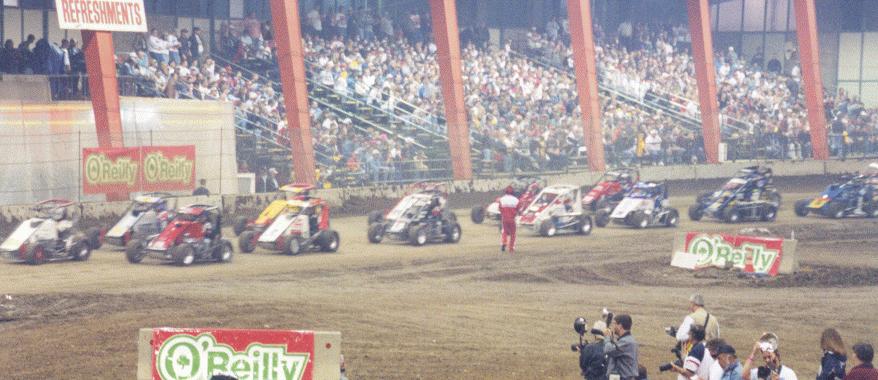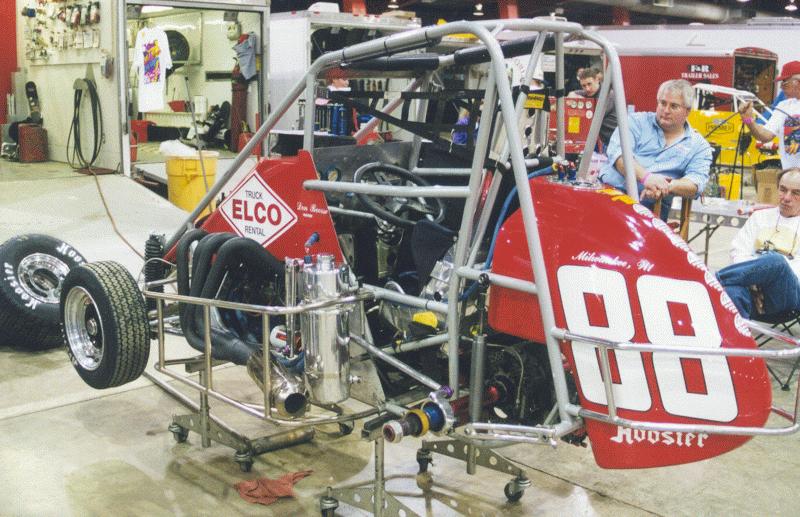
The 14th Annual Chili Bowl Midget Nationals

By Kevin Camp July 2000
Every year for the last 14 seasons , the top midget drivers in America gather in the International Petroleum Exposition building at the Tulsa County Fairgrounds and hold one of the toughest races on their calendar. The race held is non-sanctioned and does not award points toward the National Championship but it's the one they all want to win.
To give you an idea of the size of the facility, the track is just over 1/5 mile oval held in the lower section of the IPE building. The upper area houses the pits and equipment to support the 130 competitors, a huge product display and midway area where fans can purchase product and see display items, a full size basketball court used for the annual driverís charity game, and a massive parking area for the official vehicles. The competitors represent gigantic teams, by dirt oval standards, with tractor-trailers to privateers with a 24 foot box trailers and a pickup truck. Lest anyone think that midgets are low tech racing machines, the cars are constructed using time honored chrome-moly tubing chassis and use elaborate multi-link suspension designs incorporating torsion bars, coil-over dampers, or combinations of both. Aluminum, titanium, and other aircraft alloys are used to build the cars and keep weight to a minimum.

The cars are limited to a 65 inch (1650mm) wheelbase and have no minimum weight. Most of the cars weigh in around 1000 pounds. The car uses a spool-type rear end, meaning it has no differential, and thus must use a larger outside rear tire to get the car to turn. In fact it is a battle to keep the car from turning while on the straight. The front tires really only see any duty when in the corners and usually are held just above the track surface under hard acceleration as the torque from the motor is more than enough to wheelstand the car. The engines meet the National Championship guidelines and can displace no more than 150 cubic inches (approximately 3.0 liters). Engine manufacturers vary in style and design using anything from 2.0 liter Ford overhead cam four cylinder engines and Chevrolet II 2.4 liter over head valve engines to exotic Mercury Marine 300 V-6s and the venerable Autocraft Volkswagen air-cooled four cylinder. Professional engine preparation shops like Esslinger, Gaerte, Brayton Engineering, Ed Pink, and privateers have developed the various engine designs into very reliable, high revving, four hundred plus horsepower monsters capable of propelling the cars to over 140 miles per hour on large oval tracks. Almost all of the engines employ individual cylinder fuel injection. The cars use no transmissions and employ only an in-and-out direct drive gearbox. This gives the cars instant reaction to throttle inputs from the driver. The cars are required to use mufflers and alcohol fuel. Despite the use of mufflers, the noise in the track is terrific and each of the cars has its own distinct howl. The only time alcohol fumes became a problem was during caution periods.
Continued on the....
NEXT PAGE